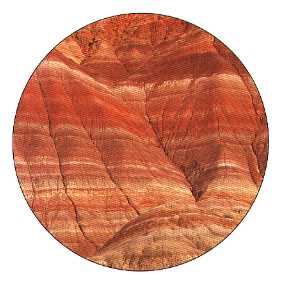Credits
Front cover and title page: Hurricane Andrew over the Gulf of Mexico, Geostationary Operational Environmental Satellite-7, August 1992, NOAA.
Back cover: Map of the world by Isidore of Seville [A.D. 560-636], redrawn and published in 1898 in Mappaemundi: Die altesten Weltkarten, a six-volume work compiled by Konrad Miller. Library of Congress, Geography and Map Division.
page iv: Entrance to National Academy of Sciences building, Carol M. Highsmith, photographer.
page v: Marble seal of the National Academy of Sciences, David Patterson, photographer.
page vi: Detail, © Marty Stouffer, 1991/PNI.
page x: Young stars, Hubble Space Telescope, NASA.
page 3: background: © Ken Graham/PNI; insets: photograph of Edwin Hubble, National Academy of Sciences; Hubble Deep Field, Hubble Space Telescope, NASA.
page 4: Young stellar disks in infrared, Hubble Space Telescope, NASA.
page 6: left: DNA, Dr. A. Lesk, Laboratory of Molecular Biology/Science Photo Library; right: RNA, © Ken Eward/Science Source, Photo Researchers, Inc.
page 9: Charles Darwin, National Library of Medicine, National Institutes of Health.
page 9: Galápagos Islands, © Archive Photos, 1994/PNI.
page 11: Darwin's finches. Drawing by K. Thalia Grant. From The Beak of the Finch by Jonathan Weiner. © 1994 by Jonathan Weiner. Reprinted by permission of Alfred A. Knopf, Inc.
page 12: Paria River, Utah. Grand Staircase/Escalante National Monument, © Tom Till.
pages 12-13: Illustration of layers of sedimentary rock, Joyce Pendola, courtesy Natural History.
page 14: Illustration by Leigh Coriale Design and Illustration, adapted from Patterns in Evolution: The New Molecular View by Lewin, © Scientific American Library. Used with permission by W.H. Freeman and Company.
page 16: top, © Ron Sanford, 1994/PNI; bottom left, © Marty Stouffer, 1991/PNI; bottom right, © Erwin Bauer, Peggy Bauer, 1990/PNI.
page 18: Myoglobin, © Irvine Gels.
page 19: Cytochrome c. Illustration by Leigh Coriale Design and Illustration, adapted from the Journal of Molecular Biology, Vol. I, 37, 1971.
pages 20-21: Drawings of mammalian land ancestor and Balaenoptera, by N. Haver. Drawings of Ambulocetus and Rodhocetus, by N. Haver, © Sinauer Associates.
page 22: Illustration adapted from The Cambridge Encyclopedia of Life Sciences. Reprinted with permission of Cambridge University Press.
page 24: Drawings by Darwen Hennings. From Biology: Concepts and Applications, 1st edition, by C. Starr. © 1991. Reprinted with permission of Brooks/Cole Publishing.
page 36: Detail, Paria River, Utah. Grand Staircase/Escalante National Monument, © Tom Till.



